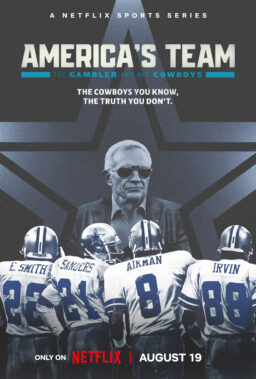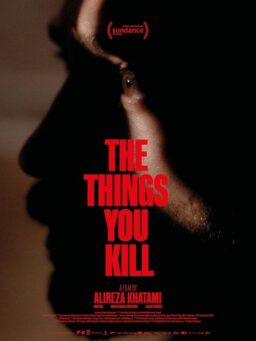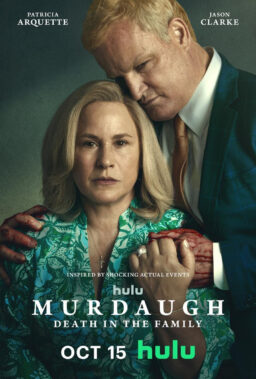Ebert’s Best Film Lists: 1967-Present
1. “GoodFellas“
Martin Scorsese astounds me with the energy he brings to filmmaking. There is a life in his films that makes other films seem sluggish and slow-witted; a quick responsiveness of dialogue and motive that matches our own clock speed, so that we think with his characters, instead of about them. In “GoodFellas,” a story of a man growing up, growing old and growing sad in the Mafia, he has made a study of a corner of American life so perceptive, so alert to the nuances of character and dialect, that it is a sociological document.
But it’s more: A tragedy, about men and women trapped in a value system that denies the basic impulse toward good in most of us. One of the most telling lines in the film comes from Lorraine Bracco, as the wife of a Mafioso. As an outsider, she comes to realize one day that her life is contained entirely within the Mafia community. Their values have become her values, and she has started to think that men who work steady jobs for a living are suckers.
“GoodFellas” is an epic on the scale of “The Godfather,” and it uses its expansive running time to develop a real feeling for the way a lifetime develops almost by chance at first, and then sets its fateful course. Because we see mostly through the eyes of Henry Hill (Ray Liotta), characters swim in and out of focus; the character of Jimmy Conway (Robert De Niro), for example, is shadowy in the earlier passages of the film, and then takes on a central importance. And then there’s Tommy DeVito (Joe Pesci), always on the outside looking in, glorying in his fleeting moments of power, laughing too loudly, raging anger that can flash out of control in a second. His final scene in this movie is one of the greatest moments of sudden realization I have ever seen; the development, the buildup and the payoff are handled by Scorsese with the skill of a great tragedian.
2. “Monsieur Hire“
Here is the portrait of a man living a precise and shy life in a tiny corner of the world, while tides of passion break all around him. Monsieur Hire is a small, neat, bald little man who wroks alone in an office and then comes home to his rented room, where al is order and precision. He boils an egg. He listens to classical music. He looks out of his window — at the window across the courtyard, where a young woman undresses, night after night, in full view.
She knows he is looking. They do not acknowledge one another. He worships her. She senses this. One day a murder is committed in the nieghborhood, and suspicion of course falls on this strange little man. But is he capable of murder? Does the woman know someone who is? Will she save Monsieur Hire from being charged with the crime? Can he withstand this sudden glare of attention into his dark little corner? “Monsieur Hire,” directed by Patrice Leconte and starring Michel Blanc and Sandrine Bonnaire, is based on one of the greatest novels of Georges Simenon, that poet of the sins that take place in secret. It is a mesmerizing experience.
3. “Dances with Wolves“
In the aftermath of the Civil War, an infantry officer is posted all by
himself at a remote outpost in the Dakotas, where he is eventually driven by loneliness and curiosity into responding when the local Sioux Indians make an overture. Slowly, cautiously, tentatively, the man opens himself to Indian culture, and the film follows him as he is adopted into the tribe.
Then the fragile structure is broken when more U.S. Cavalry arrive, and we are reminded of the tragic and short-sighted racism that led to the genocidal destruction of Native Americans.
The movie stars Kevin Costner, who also makes his directing debut. He shows a sure feeling for the land, for gesture, for language and silence. And the movie expands in its epic form, freeing us from the notion that a plot must be hurried along, freeing us to grow and explore as the protagonist does, as we gradually learn about another culture. One of the key decisions is to allow the Sioux to speak iin their own language, instead of in the demeaning pidgin English so common in films about Indians. The fim is filled with strong , effective performances by actors by Mary McDonnell as the woman Costner falls in love with, and Graham Greene and Rodney A. Grant as two of
the Sioux leaders.
4. “The Grifters“
What a clockwork mechanism of betrayal and greed this is! Based on a hard-boiled novel by the legendary Jim Thompson and a screenplay by mystery craftsman Donald Westlake, the movie weaves a tangled web of deceit involving three con artists: a callow young man (John Cusack), his mother (Anjelica Huston) and his girlfriend (Annette Bening). He’s into small-time cons, like cheating bartenders out of $20 His mother works for a big-time horse betting operation, traveling to major tracks to place money and skimming off some of the action for herself. The girlfriend is a free-lance con artist whose true motives are a deep secret. The director, Stephen Frears, begins with a character who thinks he is cynical and mercilessly shows him what true cynicism is. The movies’ ending is like a slap in the face.
5. “Reversal of Fortune“
Based on the convoluted trials of Klaus von Bulow, the aristocrat accused of attempting to murder his socialite wife, Sunny, this is a dark comedy about twisted motives. Jeremy Irons stars, in one of the very best performances of the year, as Klaus — mannered, affected, odd, with a teasing sense of humor that seems to exploit the possibility that he might be wicked. Ron Silver is Alan Dershowitz, the celebrated Harvard law professor who won for Klaus on appeal, and then wrote the book that inspired this movie. And Glenn close is
Sunny, who is in a coma as the movie begins, but is glimpsed in flashbacks and also narrates the action, observing at one point that a lot of people would love to know what happend on that disputed night, but even she isn’t sure: “You tell me.” With this film and “Barfly” (1987), director Barbet Schroeder is on a roll.
6. “Santa Sangre“
This film is a throwback to the days when filmmakers had bold individual visions and were not timidly trying to duplicate the latest mass-market formulas. This is a movie like none I have seen before, a wild kaleidoscope of images and outrages, a collision between Freud and Fellini. It contains blood and glory, saints and circuses, and unspeakable secrets of the night.
And it is all wrapped up in a flamboyant parade of bold, odd, striking
imagery, with Alejandro Jodorowsky as the ringmaster. If you were going to the movies in the early 70s, you will remember the name. Jodorowsky is the perennial artist in exile who made “El Topo,” that gory cult classic that has since disappeared from view, trapped in a legal battle. Now he is back with a film that grabs you with its opening frames and shakes you for two hours with the outrageous excesses of his imagination. Strange images here: An elephant funeral, murder under the big top, a hero whose hands and arms fall under the control of his mother.
Love stories are about people who find love in happy times. Tragedies are about people who seek love in unhappy times. “Last Exit to Brooklyn” makes a point of taking place in the early 1950s, when all of the escape routes had been cut off for its major characters. The union official cannot admit to being left wing. The strike leader cannot reveal he is homosexual. The father cannot express his love for his child, the prostitute cannot accept her love for the sailor, and the drag queen is not able to love himself.
There isn’t even any music to release these characters — rock ‘n’ roll is still in the future, and the pop ballads of the era mock the passions of everyday life. The characters drink and some of them do drugs, but they don’t get high — they simply find the occasional release of oblivion.
The movie takes place in one of the gloomiest and most depressing urban settings I’ve seen in a movie. These streets aren’t mean, they’re unforgiving. Vast blank warhouse walls loom over the barren pavements, and vacant lots are filled with abandoned cars where mockeries of love take place. The director, Uli Edel, somehow finds humanity in this despair, especially in the story of the prostitute (a brave performance by Jennifer Jason Leigh), somehow insisting on her right to find love, no matter how many cards are stacked against her.
8. “Awakenings“
In 1969, in a hospital in the Bronx, a group of patients sit and wait, year after year. They are victims of the later stages of sleeping sickness, and seem frozen inside their own bodies, unable to move, to speak, to will a single one of their muscles. Some of them have been frozen in this trance state for 30 years when a doctor decides to treat them with an experimental dose of a new drug named L-dopa.
Miraculously, they awaken. They look about with wonder and joy at their freedom to choose what they will do and say. But the awakening is not all that simple, and the movie is a reminder of how precious, and fragile, life can be.
The movie is based on a book by Dr. Oliver Sacks, who is portrayed in the movie by Robin Williams as a quiet, shy, inward man who in certain ways is as closed off as his patients. Robert De Niro plays Leonard, one of the patients, who awakens after three decades and insists on living as fully as he can. With this film and “Big,” onetime sitcom star Penny Marshall establishes herself as an admirable director.
9.”The Cook, the Thief, his Wife & her Lover“
One of the year’s most audacious and controversial films, it was also one of the most thought provoking — challenging audiences to see through the shocking imagery to the parable beneath. Director Peter Greenaway set his story inside a restaurant version of hell, where a piggish gangster terrorizes the cook, browbeats his mistress and lords over a motley collection of thugs and hangers-on. The mistress and another customer in the restaurant — a mild man who likes to read while he eats — commence a passionate love affair, only to suffer the most disturbing consequences. But the revenge of the mistress on the thief is even more shocking. What did the movie mean? Greenaway provided no clues, but some critics read it as an
attack on Thatcherism in Great Britain.
10. “Mountains of the Moon“
One of the most unjustly neglected films of the year, this told the story
of the great explorer of the Victorian era, Sir Richard Burton, and his attempts to find the sources of the Nile. Explorers were the astronauts and sports heroes of the 19th century and the stakes were high. The first man back to London with news of a sensational new discovery could reap fame and fortune, and Burton’s great rival was a man named John Hanning Speke, whose fatal flaws of character were eventually his undoing. This is a grand, intelligent epic of adventure, directed by Bob Rafelson, whose earlier credits include the unforgettable “Five Easy Pieces.” Why was the movie so
widely overlooked? The ads and some of the reviews made it seem the tale of dusty old historical figures, and missed the vision, and the passion.











